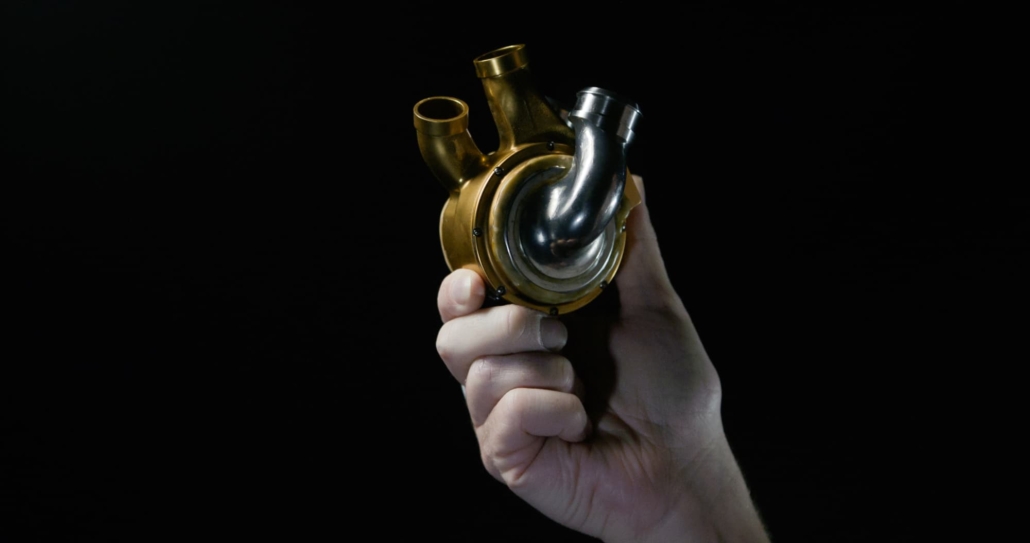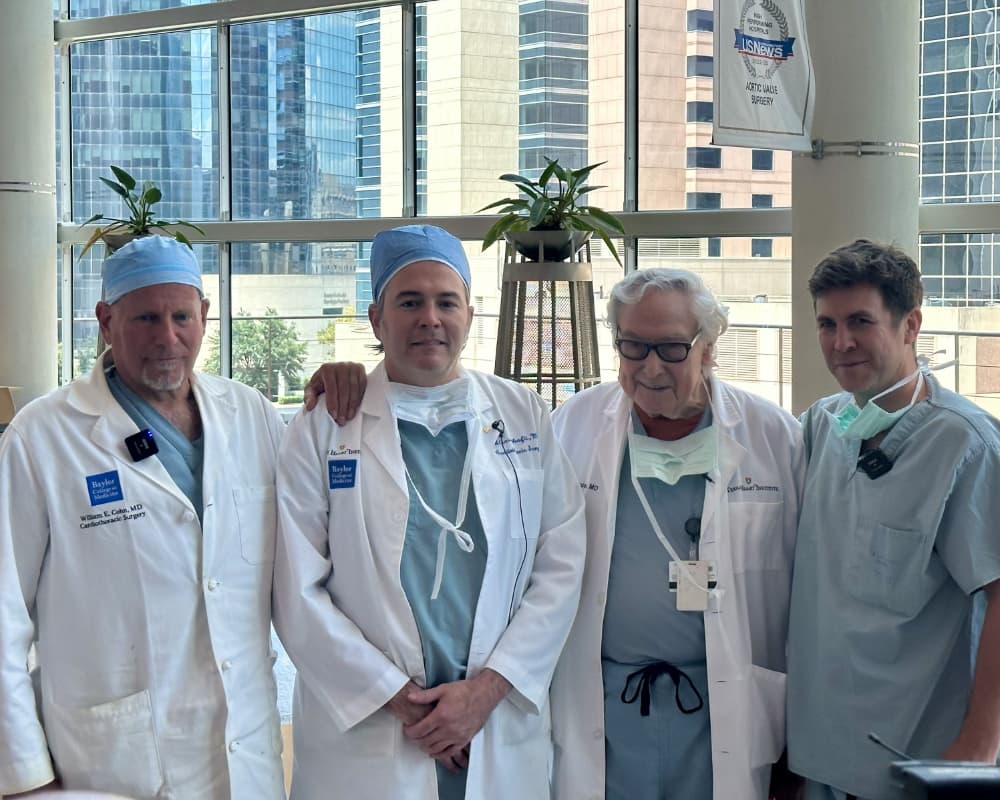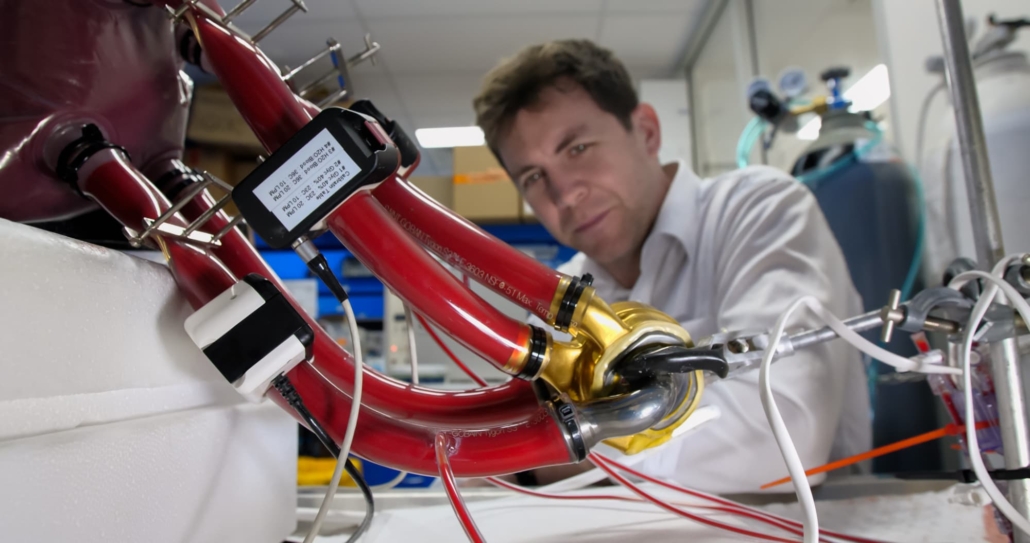BiVACOR Total Artificial Heart: First-in-human implantation marks new era in cardiac care
A groundbreaking titanium artificial heart with a single moving part has been successfully implanted in a patient with end-stage heart failure, potentially revolutionising treatment options for those awaiting transplantation.

BiVACOR Total Artificial Heart
In a landmark moment for cardiovascular medicine, the Texas Heart Institute (THI) and BiVACOR have announced the successful first-in-human implantation of the BiVACOR Total Artificial Heart (TAH). The procedure, which took place on 9 July 2024 at Baylor St. Luke’s Medical Center in the Texas Medical Center, marks the beginning of a U.S. Food and Drug Administration (FDA) Early Feasibility Study (EFS) that aims to evaluate the safety and performance of this innovative device.
Novel design challenges conventional artificial hearts
The BiVACOR TAH represents a significant departure from traditional artificial heart designs. At its core is a titanium-constructed biventricular rotary blood pump featuring a single moving part: a magnetically levitated rotor. This rotor, which pumps blood and replaces both ventricles of a failing heart, utilises magnetic levitation (MAGLEV) technology – the same principle employed in high-speed trains.

Surgical team: 1st EFS case July 9, 2024 (from left to right) Dr William Cohn, Dr Alexis Shafii, Dr Bud Frazier, Dr Daniel Timms
The device’s unique structure comprises a magnetically suspended dual-sided rotor with left and right vanes positioned within two separate pump chambers. This configuration forms a double-sided centrifugal impeller, propelling blood to both the pulmonary and systemic circulations. Notably, the TAH lacks valves or flexing ventricle chambers, with the MAGLEV system enabling pulsatile outflow through rapid cycling of the pump’s rotor.
Dr Daniel Timms, Founder and Chief Technology Officer of BiVACOR, highlighted the significance of this achievement: “I’m incredibly proud to witness the successful first-in-human implant of our TAH. This achievement would not have been possible without the courage of our first patient and their family, the dedication of our team, and our expert collaborators at The Texas Heart Institute. Utilizing advanced MAGLEV technology, our TAH brings us one step closer to providing a desperately needed option for people with end-stage heart failure who require support while waiting for a heart transplant.”
Addressing a global health crisis
The development of the BiVACOR TAH comes at a critical time in the fight against heart failure. This condition has reached epidemic proportions, affecting at least 26 million people worldwide, including 6.2 million adults in the United States alone. Despite the severity of the condition, heart transplantations – often the last resort for those with severe heart failure – are limited to fewer than 6,000 procedures globally each year.
This scarcity of donor organs has led to estimations by the U.S. National Institutes of Health that up to 100,000 patients could immediately benefit from mechanical circulatory support (MCS). The European market is thought to be of similar size, underscoring the urgent need for innovative solutions like the BiVACOR TAH.
Dr Joseph Rogers, President and Chief Executive Officer of The Texas Heart Institute and National Principal Investigator on the research, emphasised the potential impact of this development: “The Texas Heart Institute is enthused about the groundbreaking first implantation of BiVACOR’s TAH. With heart failure remaining a leading cause of mortality globally, the BiVACOR TAH offers a beacon of hope for countless patients awaiting a heart transplant. We are proud to be at the forefront of this medical breakthrough, working alongside the dedicated teams at BiVACOR, Baylor College of Medicine, and Baylor St. Luke’s Medical Center to transform the future of heart failure therapy for this vulnerable population.”

BiVACOR Total Artificial Heart Blood Loop Test with Daniel Timms, PhD, Founder & CTO
Technical specifications and potential advantages
The BiVACOR TAH boasts several features that set it apart from existing artificial heart technologies. Its compact size makes it suitable for most men and women with a Body Surface Area greater than 1.4 m2, addressing a common limitation of earlier devices. Despite its small footprint, the TAH is capable of providing sufficient cardiac output for an adult male during exercise.
The use of MAGLEV technology in the BiVACOR TAH offers several potential advantages. The non-contact suspension of the rotor eliminates mechanical wear, a common issue in conventional artificial hearts. Additionally, the design allows for large blood gaps, which may minimise blood trauma and enhance biocompatibility.
The absence of valves and flexing ventricle chambers further simplifies the device’s structure, potentially improving its durability and reliability. These features, combined with the ability to produce pulsatile outflow, position the BiVACOR TAH as a promising long-term therapy for patients with biventricular heart failure.
Looking ahead: The path to widespread adoption
The successful first-in-human implantation of the BiVACOR TAH marks the beginning of a crucial phase in its development. The current FDA-approved EFS aims to enrol four additional patients following this initial implantation. These studies will provide valuable data on the device’s safety and performance in a clinical setting.
As a bridge-to-transplant solution, the BiVACOR TAH could significantly impact the lives of patients with severe biventricular heart failure or univentricular heart failure where left ventricular assist device support is not recommended. If successful, this technology could help address the critical shortage of donor hearts and provide a lifeline to patients who might otherwise face limited treatment options.
The collaboration between BiVACOR, The Texas Heart Institute, and other partners in this endeavour highlights the importance of multidisciplinary approaches in advancing cardiovascular medicine. As the study progresses, the medical community will be watching closely to see if the BiVACOR TAH can fulfil its promise of transforming the landscape of heart failure therapy.
While challenges undoubtedly lie ahead, the successful implantation of the BiVACOR TAH represents a significant step forward in the field of artificial heart technology. As further data emerges from the ongoing clinical trials, it may herald a new era in the treatment of end-stage heart failure, offering hope to patients and clinicians alike.

